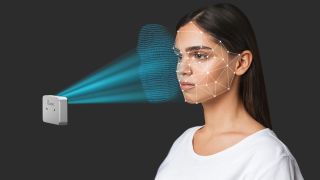Intel looks to supercharge facial recognition with new RealSense ID platform
Anti-spoofing technology prevents false entry attempts

Intel has unveiled a new on-device facial recognition solution that could improve security for a host of applications, including smart locks, point-of-sale systems, and more. RealSense ID is the latest addition to the company’s RealSense range, products that are designed to give depth perception capabilities to other devices.
RealSense ID combines an active depth sensor with a specialized neural network to deliver secure, accurate facial authentication. The technology also promises to be easy to use, with no network setup required.
The platform even promises to adapt as users change over time, continuing to work effectively even as individuals adjust their appearance, changing their facial hair or glasses, for example.
- These are the best ecommerce platforms around today
- We've highlighted the best payment gateways
- We've also put together a list of the best web hosting providers
“Intel RealSense ID combines purpose-built hardware and software with a dedicated neural network designed to deliver a secure facial authentication platform that users can trust,” Sagi Ben Moshe, Intel corporate vice president and general manager of Emerging Growth and Incubation, commented.
Anti-spoofing tech
Intel claims that its new facial authentication technology is an important release given that businesses and individuals are moving away from traditional authentication methods that may be more vulnerable to identity theft and security breaches.
Intel RealSense ID comes equipped with anti-spoofing technology to safeguard against false entry attempts and boasts an impressive one-in-a-million false acceptance rate.
What’s more, Intel has carried out extensive data collection on all ethnicities, investing time and money to help eliminate the kind of racial and gender biases that often plague facial recognition technologies.
Are you a pro? Subscribe to our newsletter
Sign up to the TechRadar Pro newsletter to get all the top news, opinion, features and guidance your business needs to succeed!
Intel’s RealSense ID is scheduled for launch in the first quarter of 2021 and will retail at $99.
- Also, check out our roundup of the best VPN services
Via VentureBeat
Barclay has been writing about technology for a decade, starting out as a freelancer with ITProPortal covering everything from London’s start-up scene to comparisons of the best cloud storage services. After that, he spent some time as the managing editor of an online outlet focusing on cloud computing, furthering his interest in virtualization, Big Data, and the Internet of Things.
Most Popular



